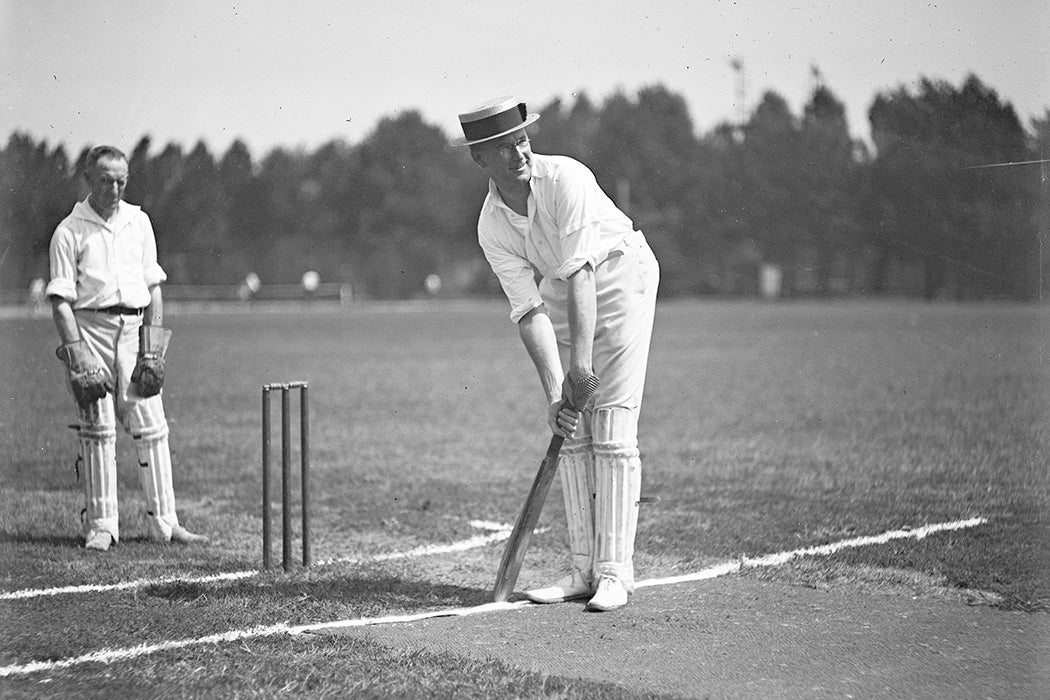Many people don’t realize cricket was ever widely played in North America, let alone that it was very popular in the nineteenth century. The first international cricket match on record was between the United States and Canada, and the first overseas tour by an English team was to North America. But from a nineteenth-century heyday, the sport dropped away in popularity in both the US and Canada. Scholars have a range of theories about cricket’s demise.
Sports scholar David Cooper traces the drop off in interest in Canada to an almost century-long series of losses. “From 1830 to 1920,” he writes,
Canadian teams played 98 games against overseas opposition, losing 72, drawing 16, and recording 10 victories. Of these 10 victories, the first did not occur until 1886 when Hamilton defeated a visiting team from the West Indies. Many of these losses were by a large margin and drew considerable criticism from the media.
These defeats, sometimes by humiliating margins, included home matches with visiting Australian teams. Despite this, cricket continued to be played, and Canada would regularly host visiting teams. In the 1930s, some short-lived success gave Canadians hope that a national team could achieve the top tier of international cricket and be granted “test” status—a status accorded to England and Australia in 1877, South Africa in 1889, and New Zealand in 1930. But it was not to be.
Canadian cricket was also hamstrung by an insistence on amateurism in the sport, preventing the hiring of professional coaches from the UK, which had done much to boost the level of the game elsewhere. Cooper also suggests latitude itself played a part.
“In Australia, New Zealand, West Indies, South Africa, India, Pakistan, Sri Lanka, and Zimbabwe, the cricket season has traditionally been scheduled to avoid the English cricket season,” he writes. “The timing of the cricket season has allowed these international teams to regularly tour England without disrupting their own season, so that players from these countries can play in England and English players and coaches can visit these countries.”
Canada’s harsh winters meant less flexibility when it came to scheduling, home and away.
When George B. Kirsch considers the fate of cricket in the United States, he sees its collapse as the result of a combination of factors. He dismisses claims that it failed because fact it was an imported game.
“North Americans did not dismiss cricket because it was of English origins,” Kirsch argues. That is,
they adopted other British sports—most notably golf, tennis, and rowing (although, in the case of golf, there was a great deal of Americanization). It was highly unlikely that Americans would choose cricket as the national pastime, but that did not mean that they would reject the game completely.
Rather, it was the competitive arena of summer bat-and-ball sports in the United States that sealed cricket’s fate.
“In the United States, the competition among cricket and several early versions of baseball determined which bat-and-ball game would become the American national pastime,” he writes.
Baseball evolved and adapted to the public’s needs, appealing both to players and spectators. The fact that cricket was popular with the elite—and still hewed to rules dictated from London—hampered this kind of development.
“Attempts to promote an American style of cricket failed because of indifference or resistance by the Englishmen who dominated the sport in the United States,” Kirsch explains. Anglo-American cricket-playing elites
dismissed all radical innovations as simply “not cricket.” The upper-class proper Philadelphians who patronized the sport before and after the Civil War viewed it as superior to baseball and did not wish to change its rules to democratize the game.
This remained the situation for cricket for most of the twentieth century. And “cricket remains marginal in America because the majority of sporting enthusiasts believe that its matches are too long, that it lacks sufficient action for players and excitement for spectators,” Kirsch writes.
Weekly Newsletter
But changing demographics as well as in international competition are changing the cricket landscape. Globally, there are more one-day match competitions, and even as Kirsch suggests “that is still too long for most Americans,” the sport is growing in the US. As he reports, in 2010,
cricket had about fifteen million fans, thirty thousand registered players, 950 clubs, and forty-eight leagues in the United States. In the spring of 2013, the numbers had increased to eleven hundred registered clubs in forty-nine leagues and approximately 35,000 active cricketers.
Many of these players are from the South Asian and Caribbean diasporas, and they grew up playing cricket. Satellite and internet sports coverage also means matches from around the world can find an audience in the US and elsewhere.
USA Cricket currently holds associate member status of the International Cricket Council, the sport’s global governing body. Full member status is for the top-level teams. In May 2024, the US men’s cricket team achieved their first ever victory over a full member country, beating Bangladesh in a T20 International series. If the American team continues to compete at the top level, it will no doubt attract many new fans to the sport.
Editor’s Note: The final paragraph of this story was amended to clarify that the US and Bangladesh met in a T20I match.







